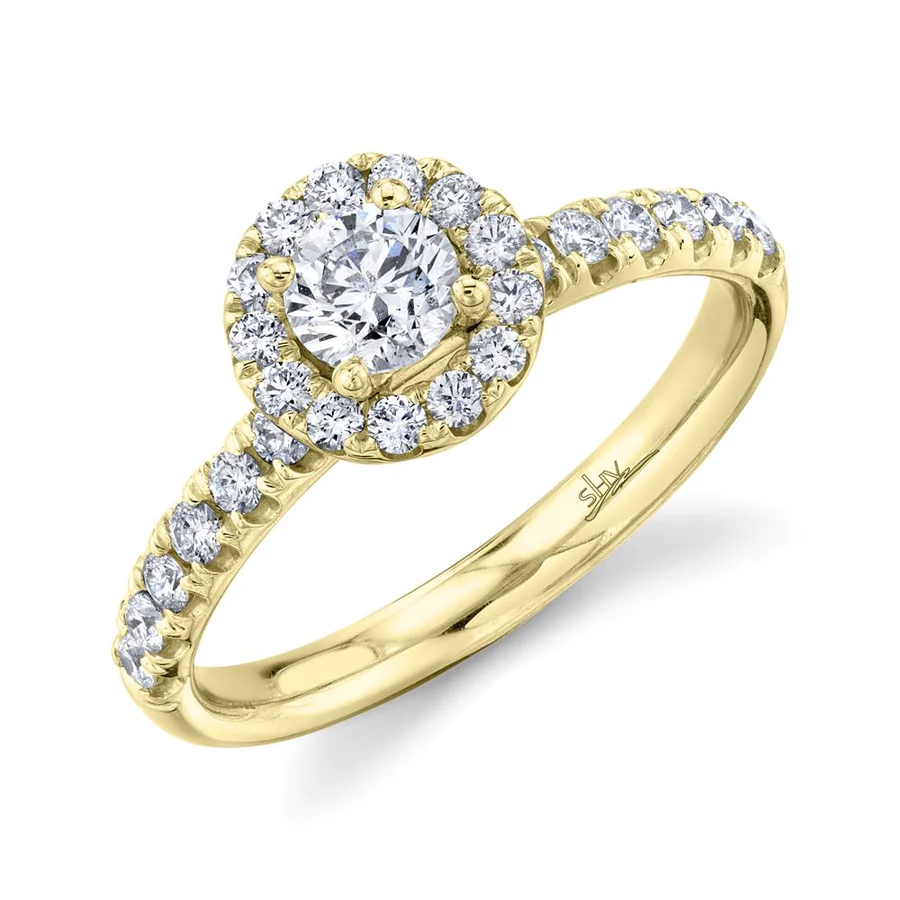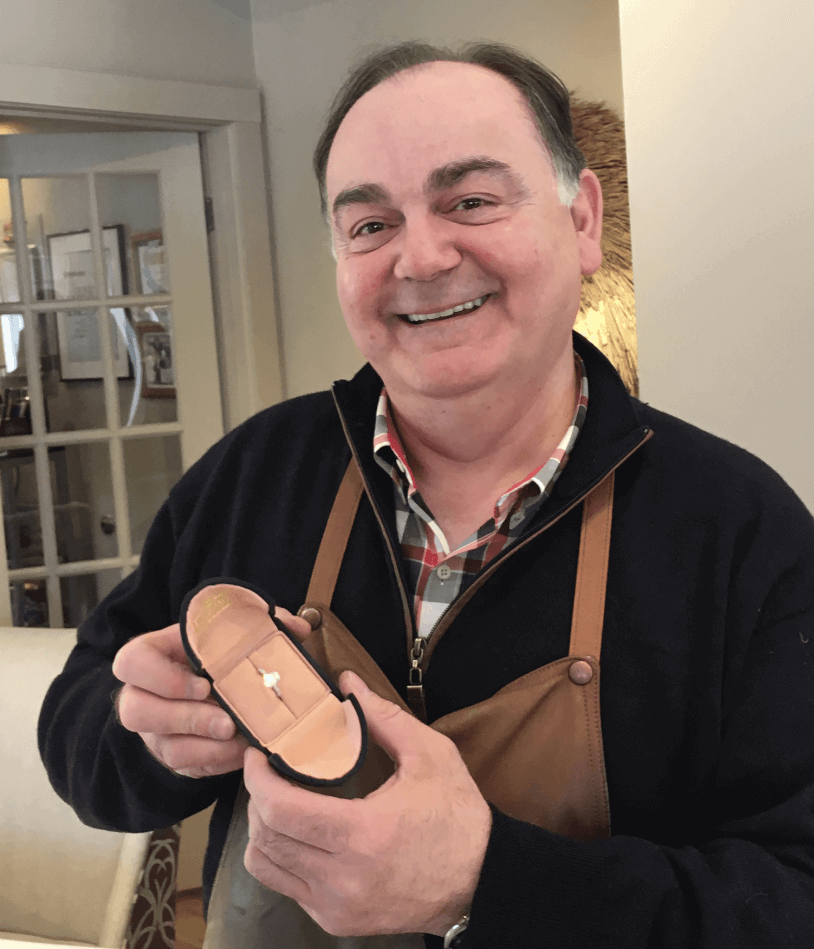DIAMOND EDUCATION
The 4Cs of Diamonds
For centuries, diamonds have stood as symbols of luxury, commitment, and eternal love. These shimmering gems, formed deep within the Earth’s mantle, have not only captivated us with their beauty and sparkle but have also been intertwined with tales of romance, power, and mystery. From ancient kings who wore them as symbols of invincibility to modern-day lovers expressing unwavering commitment, the allure of diamonds is timeless.
However, while the beauty of a diamond might seem universally acknowledged, understanding its intrinsic value requires a deeper insight.
Not all diamonds are created equal. In a quest to standardize their value and attributes, the 4 C’s – color, clarity, cut, and carat weight – emerged as the definitive parameters.
This grading system, introduced in the 1940s by Robert M. Shipley, transformed the diamond industry, providing enthusiasts and experts alike a lens through which to view, evaluate, and most importantly, appreciate these dazzling treasures.
Here’s a closer look at the 4 C’s that define every diamond’s unique charm:
1. Color
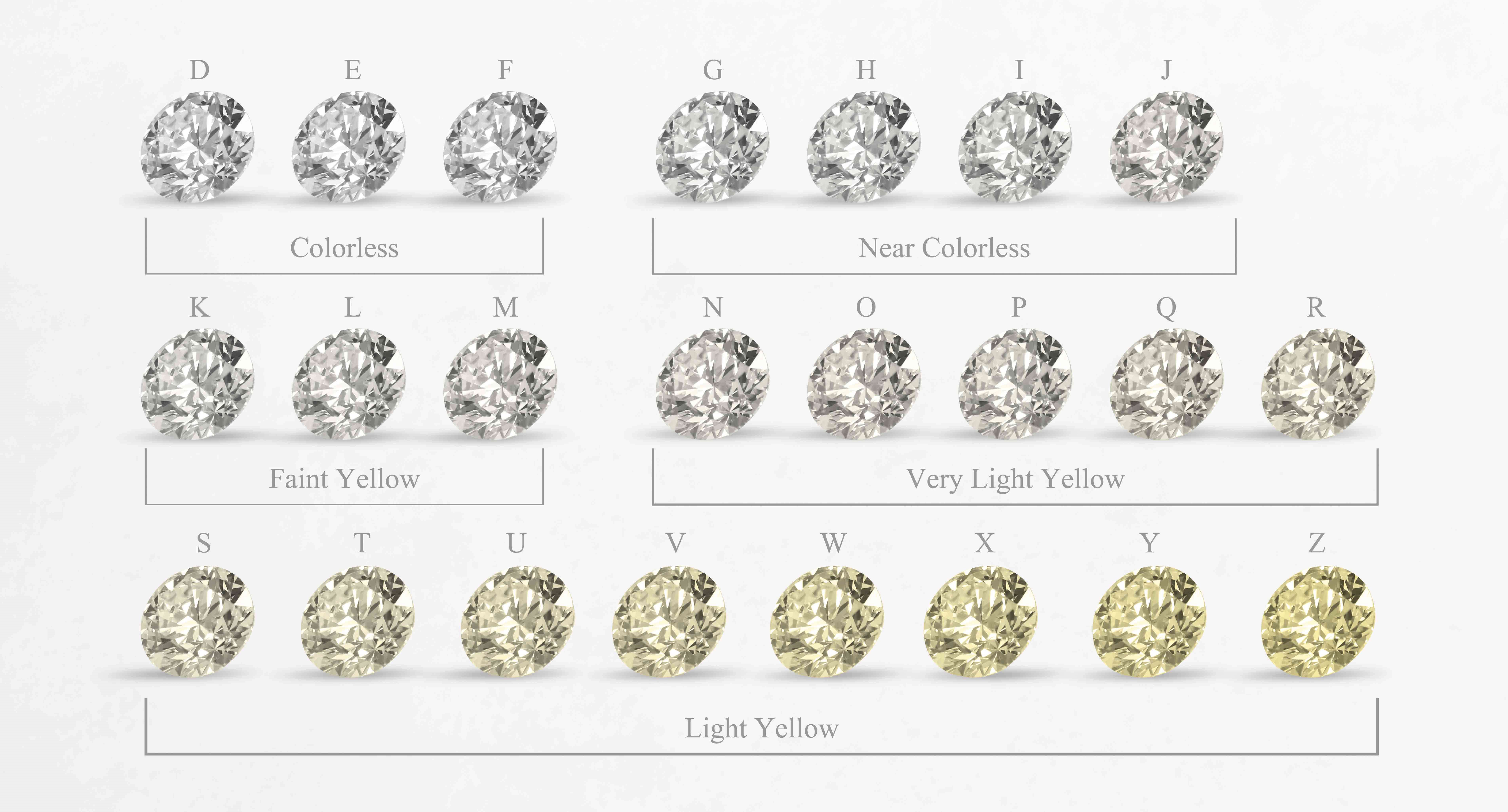

- D-F: Colorless. These diamonds are considered the most valuable due to their rarity.
- G-J: Near Colorless. To the untrained eye, these diamonds look colorless but contain slight hints of color under expert scrutiny.
- K-M: Faint. Diamonds in this range have a soft yellow or brown tint, which may or may not be visible to the naked eye.
- N-Z: Noticeable color. As you approach Z, the color becomes increasingly obvious.
While the value of a diamond goes up with the less color it has, it should be noted that there is a subrange of colored diamonds that are extremely rare and valuable. These diamonds, known as “fancy colored”, go beyond the Z designation and have a wide range of colors.
2. Clarity
Diamonds are formed deep within the Earth under extreme heat and pressure. This intense process can result in internal (inclusions) and external (blemishes) imperfections. Clarity is the measurement of these inclusions and blemishes within a given stone.


The GIA uses the following scale to gauge the clarity of diamonds:
- Flawless (FL): No inclusions or blemishes visible under 10x magnification.
- Internally Flawless (IF): Only minor blemishes detectable, no inclusions visible at 10x magnification
- Very, Very Slightly Included (VVS1 and VVS2): Inclusions are so minor that even experienced graders might find them hard to spot at 10x magnification.
- Very Slightly Included (VS1 and VS2): Inclusions are detectable but still minor at 10x magnification
- Slightly Included (SI1 and SI2): Inclusions are noticeable under 10x magnification.
- Included (I1, I2, and I3): Inclusions and blemishes are obvious under 10x magnification, and can sometimes be seen with the naked eye.
It’s important to note that many blemishes and inclusions are invisible to the untrained eye. For instance, to the average observer, VS1 and SI1 diamonds may look exactly the same.
Nevertheless, even if imperfections are not observable without the proper tools or training, a diamond’s clarity still has a significant impact on its value.
3. Cut
The cut of a diamond extends beyond its shape, such as round, oval, or princess; it evaluates how effectively a diamond’s facets are cut to interact with light.
This assessment of a diamond’s cut encompasses essential elements:
- Fire: How a diamond disperses light into different colors.
- Brilliance: The reflection of white light.
- Scintillation: The diamond’s sparkle when moved.
The Gemological Institute of America (GIA) employs a grading system that ranges from Excellent to Poor to assess the cut of a diamond. Put simply, the higher the cut grade, the better the diamond would be at reflecting light.
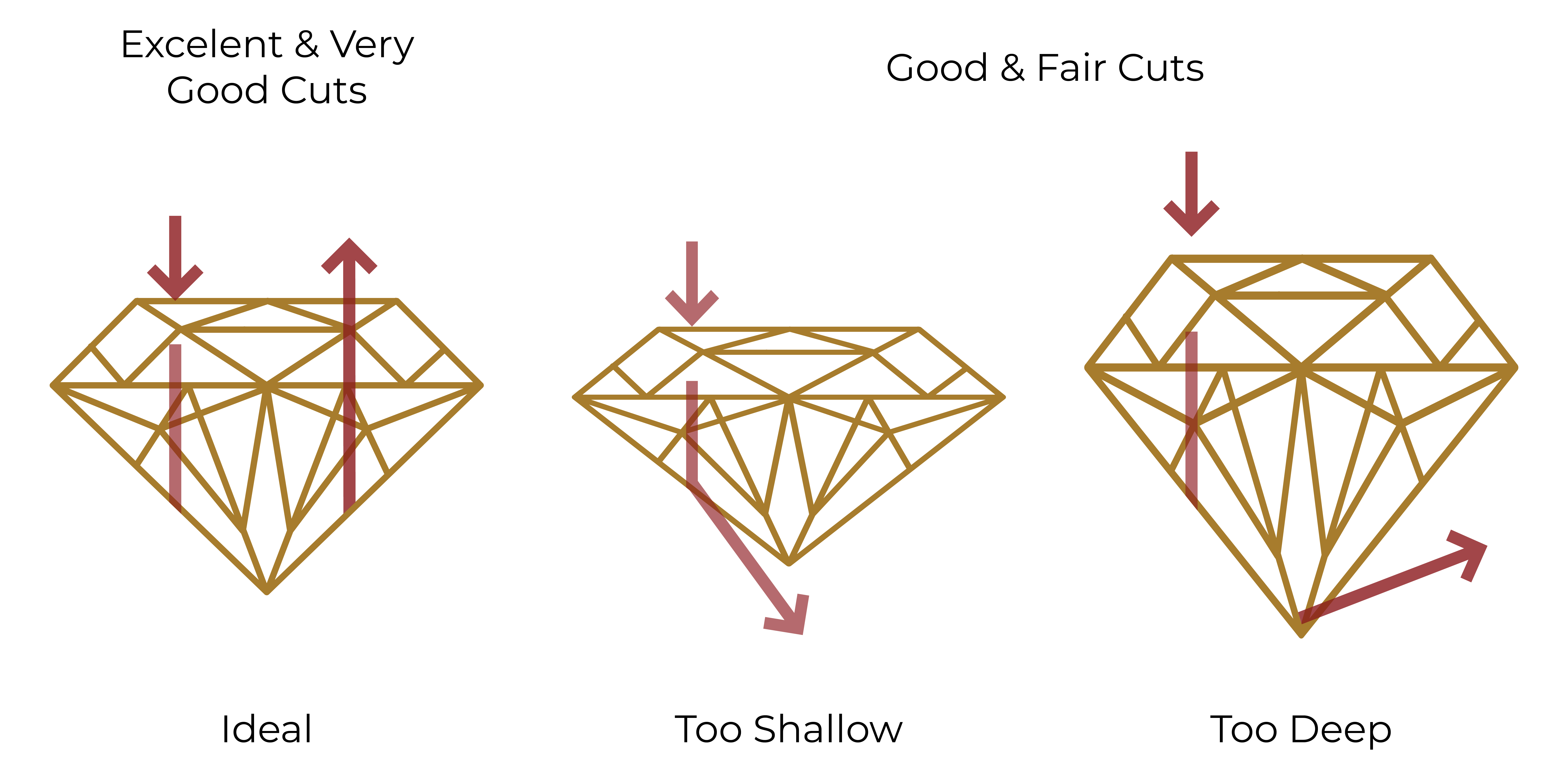

A finely crafted diamond with an excellent cut sparkles with unparalleled brilliance, while one cut poorly would appear lackluster. It’s worth noting that even diamond with optimal color and clarity can appear dull if poorly cut. This underscores the paramount importance of the cut in defining a diamond’s overall beauty and radiance.
4. Carat
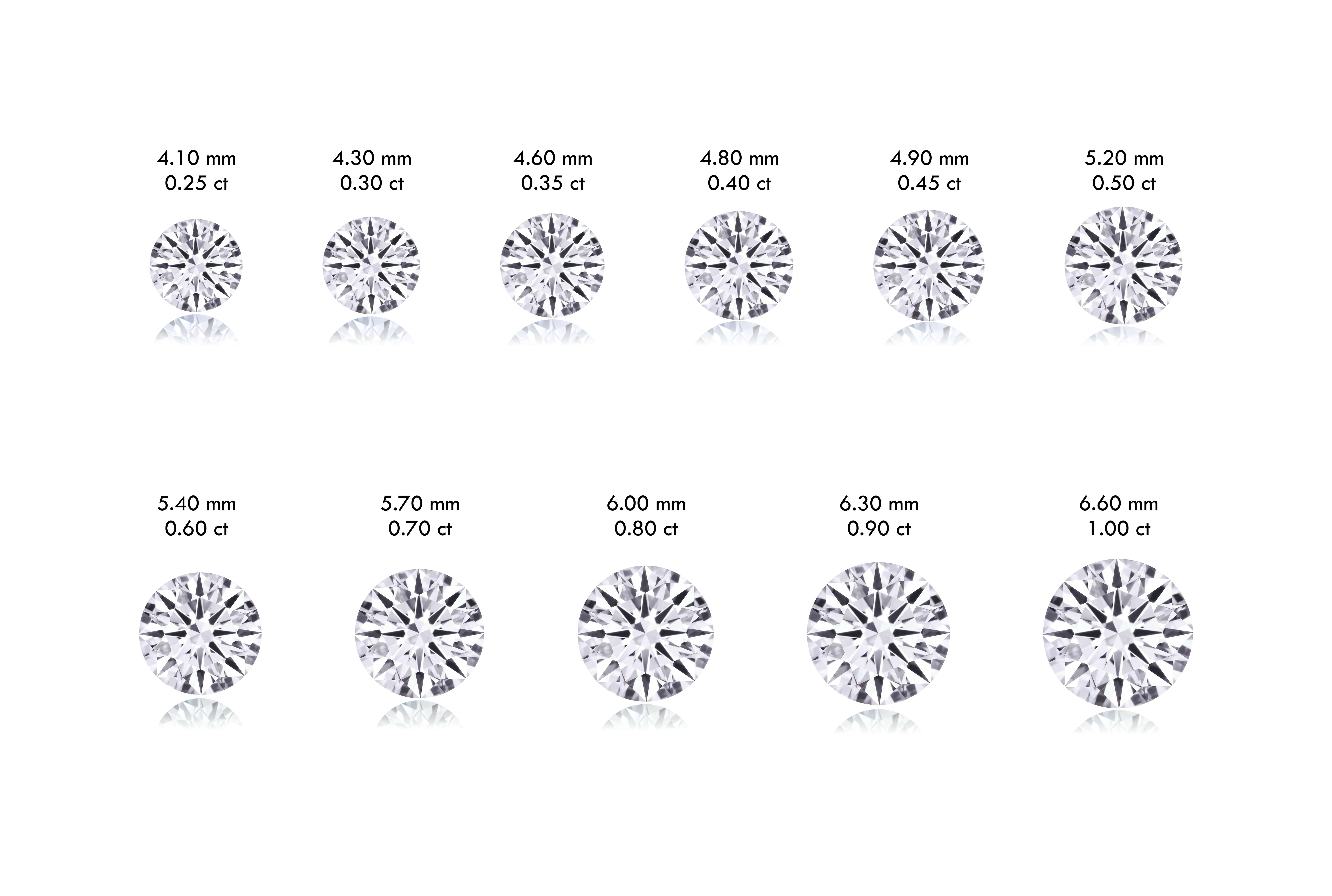

Carat denotes a diamond’s weight, not its size. One carat is equivalent to 0.2 grams. While larger diamonds are often seen as more valuable due to their rarity, it’s essential to note that two diamonds of the same carat weight can differ in value based on their cut, color, and clarity.
Moreover, how a diamond is cut can impact its apparent size. A shallow cut diamond may appear larger than its actual weight suggests, while a deep cut might seem smaller.
Conclusion
Through the discerning lens of the 4 C’s, it is apparent that each factor can bestow a given diamond with its distinct character and value. Yet, beyond the technicalities, a diamond’s true essence lies in its ability to mirror the profound emotions and stories we attach to it.
From the heart of our planet to the heart of a beloved, diamonds serve as beacons of enduring love, moments captured in time, and promises held for eternity. These sparkling gems remind us that while beauty can be evaluated and categorized, true value is often intangible, resonating in the emotions of the heart.
As you embark on your journey to find that perfect diamond piece, remember, it’s not just about selecting a stone, but about choosing a legacy.

